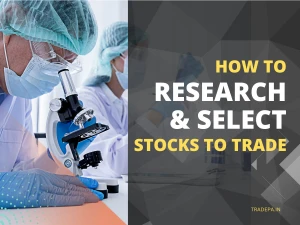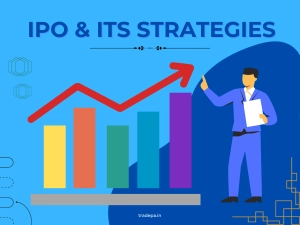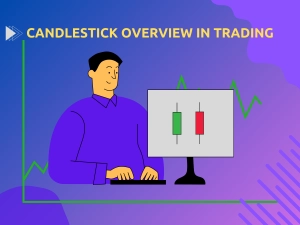Why BackTesting is Important in Trading
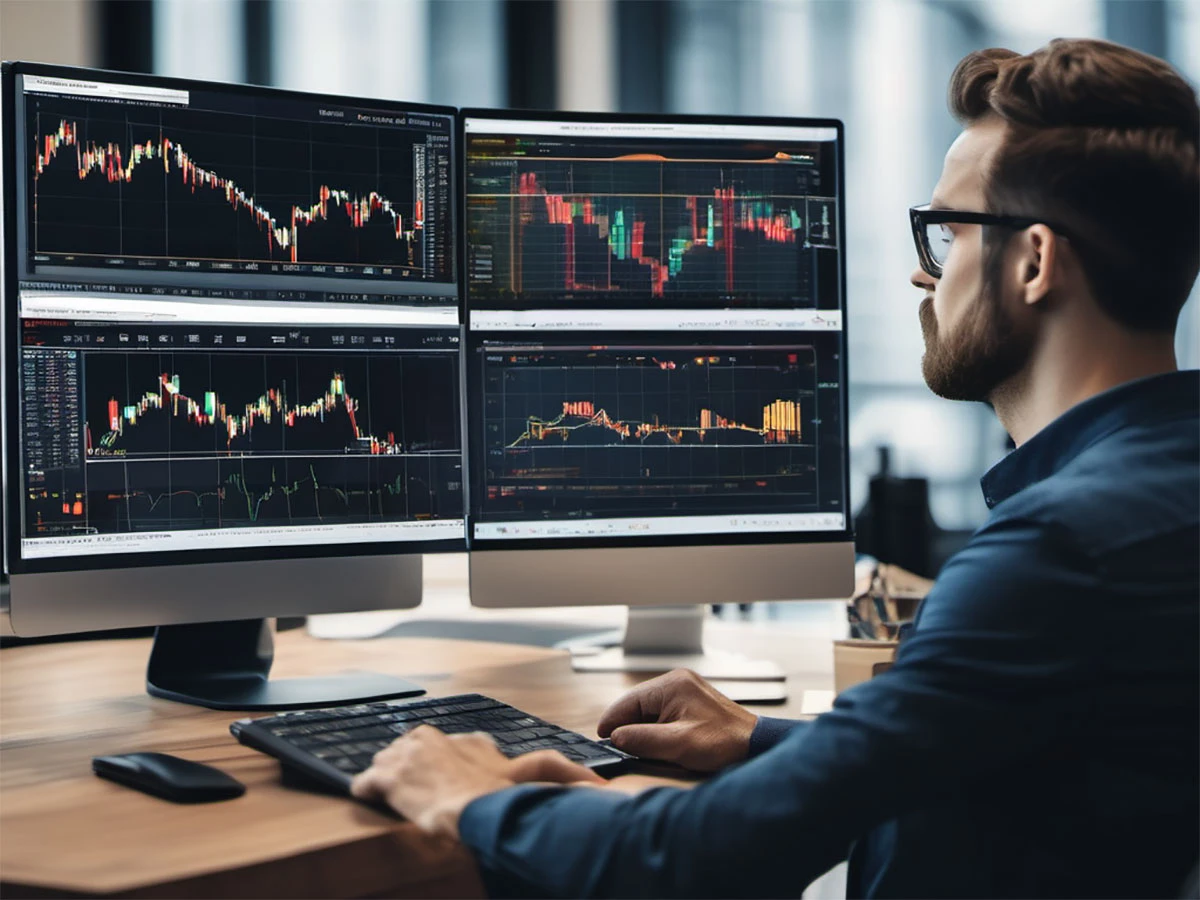
Introduction
Trading in financial markets can be both exhilarating and daunting, especially for beginners. As you step into the trading world, one term you'll frequently encounter is "backtesting." But what exactly is backtesting, and why does it matter? In this article, we'll delve into the significance of backtesting in trading, breaking down its importance and providing insights for beginners looking to enhance their trading strategies.
Before we dive into the importance of backtesting, let's clarify what it entails. Backtesting is a method used by traders to examine the performance of a trading strategy using historical data. Instead of diving headfirst into the markets with untested strategies, backtesting allows traders to simulate their trading ideas against past market conditions. By analyzing how a strategy would have performed in the past, traders can gain valuable insights into its potential efficacy and identify areas for improvement.
Now that we have a basic understanding of what backtesting involves let's explore why it's such a crucial aspect of trading. Backtesting provides traders with a roadmap, offering a glimpse into how their strategies might perform in different market scenarios. It serves as a vital tool for risk management, helping traders identify potential pitfalls and refine their strategies before putting their hard-earned capital on the line.
The Fundamentals of Backtesting
Backtesting is a term you'll frequently come across in trading. But what exactly does it mean? It involves traders evaluating the effectiveness of a trading strategy by analyzing historical market data. It's like a trial run for your strategy, where you simulate how it would have performed in the past under various market conditions. However, it's important to note that backtesting doesn't function as a crystal ball for predicting future market movements. Instead, it's a valuable tool for gaining insights into the effectiveness of your trading approach.
Defining Backtesting: What It Is and What It Isn't
Before we delve deeper, let's clarify what backtesting is and isn't. It is not about predicting the future or guaranteeing profits. Instead, it's a process of analyzing past market data to assess the viability of a trading strategy. By feeding historical data into your trading system and observing how it would have performed, you can pinpoint your strategy's strengths and weaknesses. However, it's essential to understand that backtesting has limitations. It relies on historical data, which may not accurately reflect future market conditions. Additionally, backtesting results can be influenced by factors such as slippage, spread, and transaction costs, which may not be accounted for in the simulation.
Evolution of Backtesting in Trading
Backtesting has a rich history dating back to the early days of the financial markets. Initially, traders relied on manual methods to test their strategies, often laboriously recording trades on paper. However, with technological advancements, backtesting has become more accessible and efficient. Today, traders can use sophisticated software and algorithms to analyze extensive historical data rapidly. This evolution has democratized backtesting, allowing traders of all levels to refine their strategies and improve their chances of success in the dynamic world of trading.
Getting Started with Backtesting
Embarking on your backtesting journey requires careful consideration of two key aspects: choosing the right platform and selecting suitable data.
Choosing Your Platform
Selecting the appropriate platform for backtesting is crucial for your trading success. There is a wide range of tools and software accessible in the market, each with features and functionalities. Beginners may opt for user-friendly platforms that offer intuitive interfaces and ample educational resources. Look for platforms that provide comprehensive historical data, customizable parameters, and robust analytical tools. Popular options include MetaTrader, TradingView, and NinjaTrader. Additionally, consider cost, compatibility with your trading strategy, and customer support when deciding. Remember, your chosen platform will be your foundation for thoroughly backtesting and refining your trading approach.
Selecting Your Data: Quality vs. Quantity
Regarding backtesting, the adage "quality over quantity" holds true. While using vast amounts of data for your simulations may be tempting, the data quality is paramount. Ensure the historical data you select is accurate, reliable, and representative of the markets you intend to trade. Look for datasets that include a variety of market conditions, including periods of volatility and stability. Pay attention to data accuracy, completeness, and consistency across different timeframes. While more data may offer a broader perspective, it's essential to prioritize data integrity and relevance to your trading strategy. Remember, the quality of your backtesting results hinges on the quality of your data.
The Benefits of Backtesting
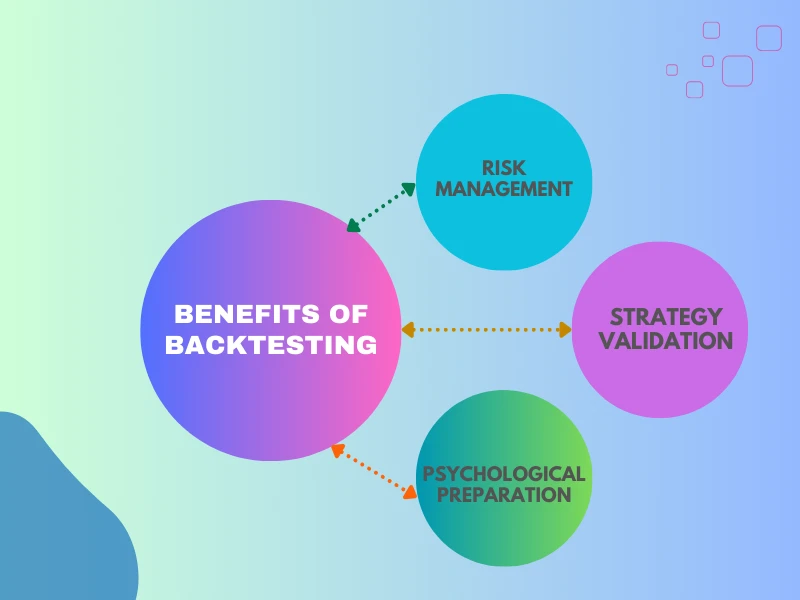
Backtesting offers many advantages for traders, ranging from risk management to psychological preparation.
Risk Management
One of the primary benefits of backtesting is its role in risk management. By simulating your trading strategy against historical data, you can assess its performance under various market conditions and identify potential risks. Backtesting allows you to quantify the potential losses associated with your strategy, helping you set realistic expectations and establish appropriate risk management measures. By understanding how your strategy performs during market volatility or adverse conditions, you can make informed decisions to mitigate potential losses and protect your capital.
Strategy Validation
Another key benefit of backtesting is its role in strategy validation. As a trader, you may have multiple trading ideas or approaches to test in the market. Backtesting provides a systematic way to evaluate these strategies and determine their effectiveness. By analyzing the historical performance of your strategies, you can identify patterns, strengths, and weaknesses. This process allows you to refine and optimize your trading approach, ultimately helping you find what works best. Whether you're a trend follower, a mean reversion trader, or a breakout specialist, backtesting can help validate your strategy and increase your confidence in executing trades.
Psychological Preparation
In addition to its analytical benefits, backtesting plays a crucial role in psychological preparation. Trading can be emotionally challenging, particularly during market uncertainty or volatility. Backtesting allows you to experience the ups and downs of trading in a controlled environment, helping you build confidence and discipline. By observing how your strategy performs over time, you can better understand market dynamics and learn to trust your trading plan. Moreover, backtesting instils discipline by enforcing consistent trading rules and decision-making processes. Regular practice and simulation can strengthen your mental grit and resilience, equipping you to navigate the complexities of the financial markets confidently.
Common Pitfalls to Avoid
In backtesting, there are several common pitfalls that traders must be aware of and actively work to avoid.
Data Mining Bias
One significant pitfall in backtesting is data mining bias. It occurs when traders inadvertently cherry-pick historical data supporting their trading strategy while ignoring data contradicting it. To mitigate this bias, it's essential to use a robust and unbiased dataset representative of the markets you intend to trade. Additionally, consider employing out-of-sample testing to validate your strategy on unseen data. By acknowledging the potential for data mining bias and implementing proactive steps to address it, you can ensure more reliable backtesting results and avoid falling victim to overly optimistic expectations.
Overfitting
Overfitting is another common pitfall that traders encounter in backtesting. It occurs when a trading strategy is overly complex and optimized to perform well on historical data but fails to generalize to unseen market conditions. While creating intricate models that perfectly fit past data may be tempting, doing so can lead to poor performance in real-world trading scenarios. To avoid overfitting:
- Balance complexity and simplicity in your trading strategy.
- Focus on developing robust, intuitive models that capture essential market dynamics without succumbing to the allure of over-optimization.
- Remember, backtesting aims to achieve more than perfect performance on historical data; it also seeks to develop strategies that can adapt and perform well in live trading environments.
Ignoring Transaction Costs
Lastly, ignoring transaction costs is a common pitfall that can markedly affect the profitability of a trading strategy. While backtesting allows traders to simulate trades without considering transaction costs, these costs play a crucial role in real-world trading. From brokerage commissions to bid-ask spreads, transaction costs can potentially erode profits and affect the overall performance of a strategy. To avoid this pitfall, incorporate realistic estimates of transaction costs into your backtesting process. By accounting for these costs upfront, you can ensure that your backtesting results accurately reflect real-world trading conditions. Additionally, consider optimizing your strategy with transaction costs in mind, focusing on maximizing risk-adjusted returns rather than raw profitability alone. By acknowledging the importance of transaction costs and incorporating them into your backtesting analysis, you can make more informed decisions and avoid costly surprises in live trading.
Best Practices for Effective Backtesting
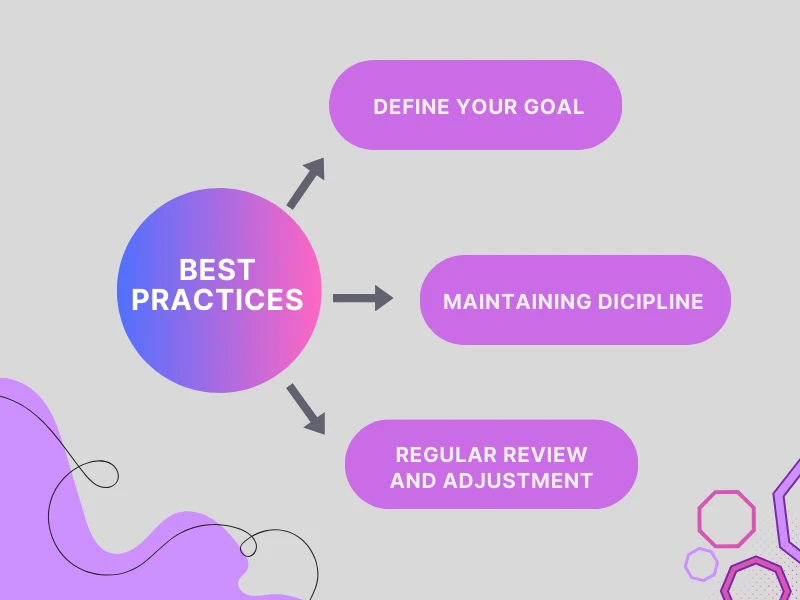
To ensure that your backtesting efforts yield meaningful results, it's essential to adhere to best practices and follow a systematic approach.
Define Your Goals
Before diving into backtesting, take the time to define your goals and set clear objectives for your trading strategy. Ask yourself what you aim to achieve through backtesting—are you seeking to optimize profitability, minimize risk, or test the viability of a new trading idea? By establishing clear goals upfront, you can tailor your backtesting process to address specific objectives and measure success accordingly. Additionally, define performance metrics and benchmarks to track progress and evaluate your strategy's effectiveness objectively. Whether achieving a target return on investment or outperforming a benchmark index, clarity on your goals will guide your backtesting efforts and ensure alignment with your overarching trading objectives.
Maintaining Discipline in Execution
Consistency holds utmost importance in effective backtesting processes. Just as you would adhere to a disciplined trading plan in live markets, maintaining consistency in your backtesting process is essential for generating reliable results. Establish consistent parameters and rules for your backtesting experiments, including entry and exit criteria, position sizing, and risk management guidelines. Avoid tweaking parameters or deviating from your predefined rules based on selective data or hindsight bias. By sticking to a consistent methodology and approach, you can minimize the influence of subjective judgment and ensure that your backtesting results are robust and reproducible. Remember, consistency breeds reliability, and disciplined execution is the cornerstone of successful backtesting.
Regular Review and Adjustment
Finally, recognize that the financial markets are dynamic and constantly evolving. What works today may not necessarily work tomorrow. Hence, it's imperative to regularly review and adjust your trading strategies according to evolving market conditions and new information. Schedule periodic reviews of your backtesting results to identify areas for improvement and adaptation. Look for patterns or trends in market data that may signal shifts in market dynamics or opportunities for optimization. Remain open-minded, flexible, and willing to iterate and refine your strategies.
Advanced Backtesting Techniques
As you become more proficient in backtesting, incorporating advanced techniques can further enhance the effectiveness of your analysis. Here are three advanced techniques to consider:
Monte Carlo Simulation
Monte Carlo simulation is a potent technique that introduces randomness into your backtesting process, allowing you to assess the robustness of your trading strategy under varying market conditions. Unlike traditional backtesting, which relies on historical data to predict future outcomes, Monte Carlo simulation generates multiple scenarios based on random sampling. By incorporating stochastic elements such as price volatility and asset correlations, Monte Carlo simulation provides a more comprehensive assessment of your strategy's performance across various market environments. This technique helps identify potential weaknesses and vulnerabilities in your strategy, allowing you to make informed adjustments to improve its resilience and adaptability.
Walk-Forward Analysis
Walk-forward analysis is a dynamic approach to backtesting that enables you to adapt your trading strategy to changing market conditions in real time. Unlike static backtesting, which evaluates a strategy's performance over a fixed historical period, walk-forward analysis divides the data into smaller segments and iteratively tests the strategy on subsequent segments. After each iteration, the strategy parameters are re-optimized based on the most recent data, allowing it to adapt to evolving market dynamics. This iterative process aids in maintaining the robustness of your strategy over time and effective over time, minimizing the risk of overfitting past data and increasing its potential for success in live trading.
Sensitivity Analysis
Sensitivity analysis involves systematically testing your trading strategy against variations in key input parameters to assess its sensitivity and identify optimal settings. By varying parameters such as entry and exit thresholds, stop-loss levels, or position sizing rules, sensitivity analysis assists in comprehending how changes in these variables affect the performance of your strategy. This technique lets you fine-tune your strategy to maximize performance while minimizing sensitivity to specific market conditions or input parameters. Additionally, sensitivity analysis provides valuable insights into the robustness of your strategy across different scenarios, helping you make more informed decisions and optimize your trading approach for improved consistency and profitability.
Conclusion
In conclusion, the power of preparation must be balanced in terms of successful trading. Embracing backtesting as a trader is not just about crunching numbers or running simulations—it's about gaining a deeper understanding of market dynamics, refining your strategies, and ultimately increasing your chances of success. By systematically evaluating your trading ideas against historical data, you can identify strengths and weaknesses, mitigate risks, and optimize your approach for improved consistency and profitability.
Backtesting is more than just a box to check off—it's a mindset, a commitment to continuous improvement, and a cornerstone of successful trading. By embracing backtesting as a vital part of your trading routine, you can confidently approach the markets, knowing that your strategies have been rigorously tested and validated. Whether you're an experienced veteran or a newcomer just beginning, integrating backtesting into your trading process can offer a competitive advantage and increase your chances of achieving your financial goals.
As you start your trading journey, remember that backtesting is not a one-time activity but an ongoing refinement and optimization process. Make backtesting a regular part of your trading routine, dedicating time and resources to analyze your strategies, identify areas for improvement, and adjust to changing market conditions. Utilize advanced techniques such as Monte Carlo simulation, walk-forward analysis, and sensitivity analysis to enhance the effectiveness of your backtesting efforts. By implementing backtesting into your trading routine, you can build confidence, minimize risks, and ultimately boost your prospects for long-term success in the dynamic and unpredictable world of financial markets.

